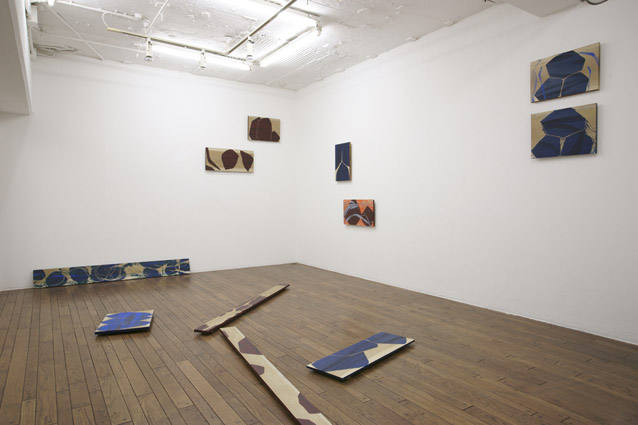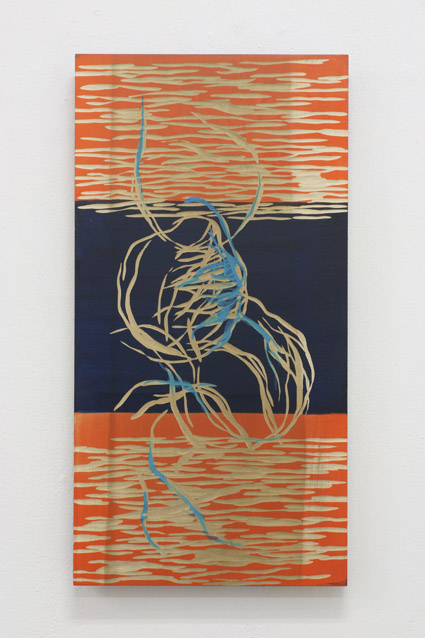Horizontal painting rooted in the Japan islands of forest
--curving painting on wood

![]()

![]()

The artist, SAKAUCHI Miwako creates curving painting on wood. The each artwork forms an installation. It is her original style.She proposed unique four points.
1.Installation as a map consisted of colored area and line.
-Sakauchi applied paintary elements (color, depth/layer, texture) to the installation. And the installation formed a map.
2.Sitespecific work on Chiba with the perspective beyond nation-Sawara, riverside district was a passage of fishery and sea merchant from all over Japan and the Asia Continent few hundreds ago. In her artwork the colored area symbolized the land, and the line of stroke symbolized passage.
3.Horizontal painting is the only descendant of the Japanese paintary tradition.
-Before modern age of Japan many paintings like painting scroll was to see putting on table or floor.
Western painting is vertical and Japanese painting is horizontal by way of viewing. She revived the Japanese tradition.
4.Wood has two meanings; symbol of ships and symbiosis with nature.
-The Japan is a forest country. We use wood for art, daily necessaries and architecture by recycling. We live with woods in past, present and future.
The concept of Solo Exhibition is perspective. The long rectangular wooden artworks put on floor made a direction in a white cube space. And the hanged short rectangular wooden artworks created vastness as a background. The variety of colors made rhythm.
On the contrary the concept of Group Exhibition is concentration. On the regional festival the exhibition space is a room of ordinary house. So Sakauchi chose to decrease the elements of installation. Selected blue colors symbolized a water stream. Selected curving paintings put on support horizontally reminded audiences the Japanese traditional way to watch painting. And on Christian culture of Europe architecture tends to vertical direction as sky. But on the Japanese culture of animism architecture tends to horizontal direction as ground. The primal structure of her installation is rooted in the Japanese tradition.
ARAI Hiroyuki, art critique